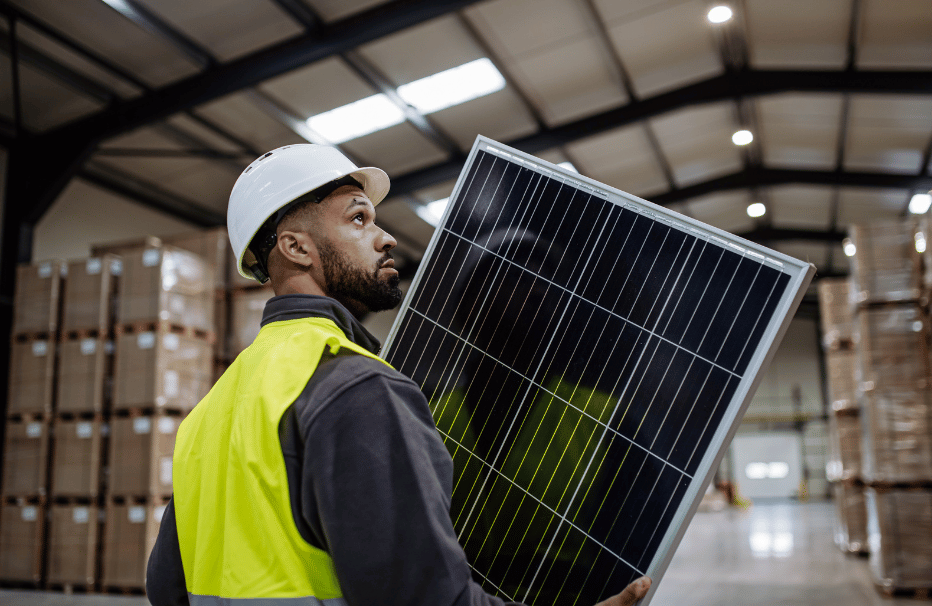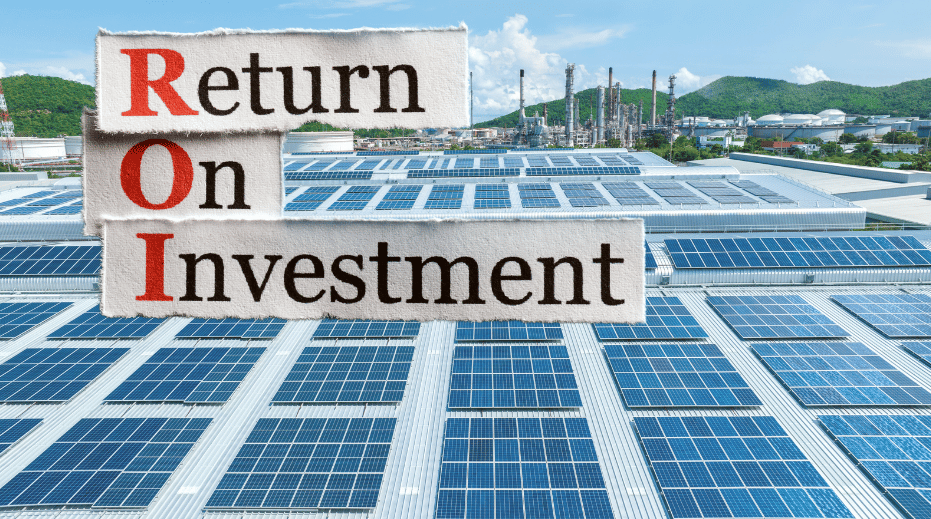The True Cost of Commercial Solar Panels – Is It Worth the Investment?
Commercial solar panels are a powerful tool for businesses aiming to cut energy costs, reduce your carbon footprint, and demonstrate a commitment to environmental sustainability. However, the decision to invest in a commercial solar system isn't necessarily that simple. Understanding the true cost, potential ROI, and long term savings is crucial to determining if it's the right move for your business.
This guide breaks down the true costs of commercial solar, including installation, maintenance, and potential savings. We'll also explore the environmental benefits and how solar can boost your company's Corporate Social Responsibility (CSR) goals.
Whether you're a small business or a large corporation, we'll help you decide if commercial solar is a smart choice. A solar energy system can power a wide range of commercial buildings, from bustling office towers and sprawling factories to busy retail spaces and essential healthcare facilities.

Understanding the Upfront Costs of Commercial Solar Panels
While the long term benefits of commercial solar are clear, it's crucial to have a firm grasp of the upfront investment required. Let's break down the key cost components:
1. Equipment Costs
- Solar Panels: The heart of your system. Panel costs vary depending on efficiency, brand, and warranty. Monocrystalline panels tend to be more efficient but also pricier than polycrystalline options.
- Inverters: These convert DC electricity from panels into usable AC power. The type and size of inverter will depend on your system's capacity.
- Mounting System: This secures panels to your roof or ground. The type of mounting system depends on your roof type and orientation.
- Balance of System (BOS): This encompasses wiring, conduits, combiner boxes, and other electrical components needed for a complete system.
2. Installation Costs
- Labour: This is a major cost component, influenced by system size, complexity, and location.
- Permits and Approvals: You'll need permits from your local council and potentially your network operator. Costs vary by region.
- Site Preparation: This may include roof reinforcement, tree removal, or ground levelling to ensure a safe and efficient installation.
- Grid Connection: Costs for connecting your system to the grid can vary depending on your location and network requirements.
While the Solar Energy Industries Association (SEIA) reports that solar energy expenses have dropped significantly over the past decade (by over 70%), it's important to note that 2023 has seen a rise in costs. Specifically, the cost of commercial solar panels and inverters has increased by 5% to 20% due to inflation, and solar labour costs have also risen by 5% compared to 2022.
The Long Term Savings of Commercial Solar
Commercial solar can save your business money in the long run. Here's how:
- Reduced Energy Bills
This is the most immediate and significant benefit. By generating your own electricity, you reduce your reliance on the grid, leading to substantial savings on your monthly energy bills. The amount you save depends on your system size, energy consumption patterns, and electricity tariffs.
- Feed-in Tariffs
In Australia, many states offer feed-in tariffs (FiTs) which pay you for any excess electricity your system feeds back into the grid. While FiT rates have decreased in recent years, they can still contribute to your overall savings.
- Increased Property Value
Studies have shown that installing solar panels can increase the value of your commercial property. This can be a significant advantage if you decide to sell or lease your premises in the future.
- Energy Price Hedging
With electricity prices expected to rise in the long term, solar provides a hedge against future price increases, offering greater budget certainty for your business.
- Government Incentives & Tax Credits
The Australian Government provides Small-scale Technology Certificates (STCs) for eligible small scale solar systems (up to 100kW). The number of STCs you receive depends on your system size and location. STCs can be traded for a point-of-sale discount, basically reducing your upfront costs.

Calculating the ROI of Your Commercial Solar Investment
According to the Clean Energy Council, commercial solar systems in Australia typically achieve payback periods of 3-7 years. After that, you're essentially generating free electricity for the remaining lifespan of your system (25+ years).
The basic formula for calculating ROI is:
ROI = (Net Profit / Cost of Investment) x 100
For example, if you invest $10,000 in a commercial solar system and it generates $2,000 in net profit per year, your ROI would be 20%.
Free Up Money to Develop Your Business
Commercial solar panels offer a unique financial advantage: once your system is paid off, you essentially have "free" electricity for years to come. This translates to ongoing savings that can be used to boost profits, pay down debt, or invest in your business's future. It's a smart financial move that delivers long term value.
Factors Affecting the Cost of Commercial Solar Panel System
While the long term financial and environmental benefits of commercial solar are substantial, it's crucial to recognise that the upfront investment can vary significantly depending on several key factors. Understanding these factors empowers you to make informed decisions and tailor your solar project to your specific needs and budget.
Factors affecting the cost of installing a commercial solar system include:
- Size of the system you require
- Panel type and their efficiency
- Orientation of the solar panels for maximum sunlight
- Addition of solar batteries for energy storage
By carefully considering these factors and working with a reputable solar installer, you can design a commercial solar system that maximises your return on investment and provides clean, sustainable energy for your business for years to come.

The Environmental Impact of Commercial Solar Power
Commercial solar panels aren't just a smart financial investment; they're also a powerful tool for reducing your business's environmental footprint and contributing to a more sustainable future. The key environmental advantages of investing in solar energy for your commercial operations are:
- Drastic Reduction in Carbon Emissions
- Improved Air Quality and Public Health
- reduce your reliance on centralised power grids
- Positive Impact on Local Ecosystems
In conclusion, investing in commercial solar is not just a sound financial decision; it's also a responsible choice for the planet. By harnessing the power of the sun, you can reduce your environmental impact, contribute to a cleaner and healthier future, and position your business as a leader in sustainability.
What is the Cost of Commercial Solar Systems?
According to the Clean Energy Council's Solar Market Report for Q2 2023, the average cost of a 100kW commercial solar system in Australia was around $100,000 - $120,000. However, costs can vary significantly based on the factors mentioned above.
It's important to obtain multiple quotes from reputable installers and compare not only the price but also the quality of equipment, warranties, and after sales support offered.
Remember, investing in a well designed and installed commercial solar system can lead to significant long term savings and a positive environmental impact.
Ready to cut costs, boost your bottom line, and go green? Commercial solar could be the answer! Contact Innovate Energy today on 1300 512 325 for a free consultation and see how much you could save.
References:
CEC Guide To Installing Solar PV For Business And Industry
CEC Guide To Installing Solar PV For Businesses In New South Wales
CEC Clean Energy Australia Report 2024.
Solar Panel Costs: Solar Choice Price Index | September 2024